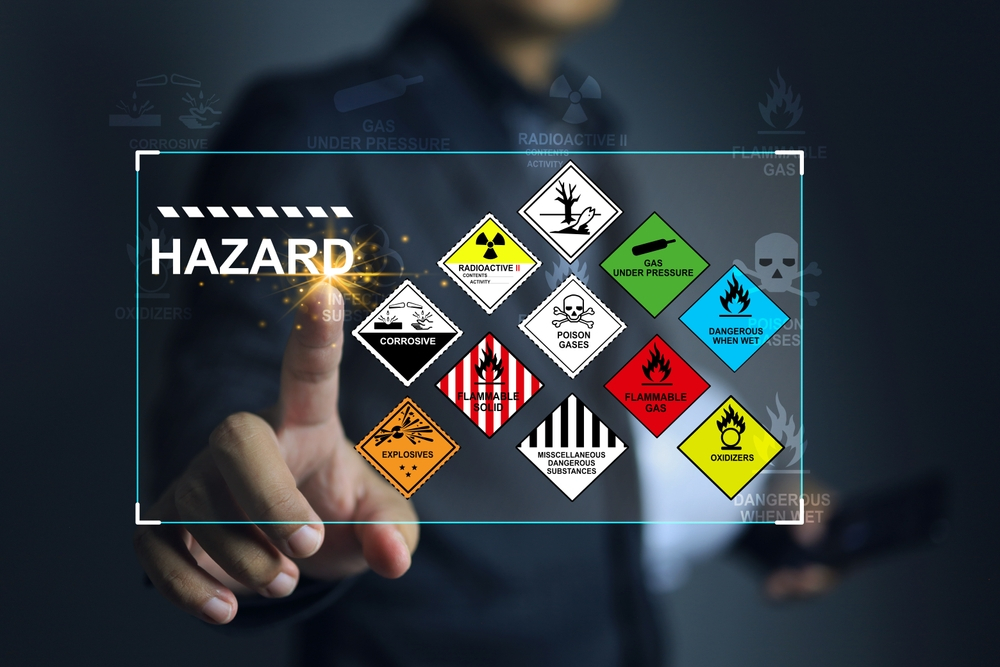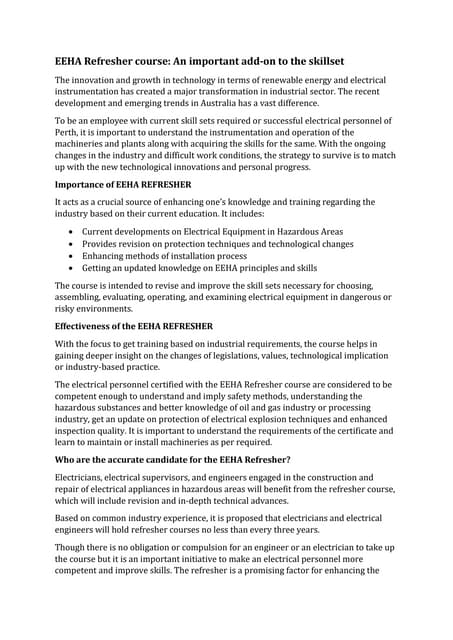Roar Solutions Fundamentals Explained
Roar Solutions Fundamentals Explained
Blog Article
All About Roar Solutions
Table of Contents9 Simple Techniques For Roar SolutionsThe Facts About Roar Solutions UncoveredThe Ultimate Guide To Roar Solutions
In such an ambience a fire or surge is feasible when 3 fundamental conditions are satisfied. This is usually described as the "dangerous location" or "burning" triangular. In order to secure installations from a possible surge a method of analysing and identifying a possibly hazardous location is needed. The purpose of this is to ensure the proper choice and setup of equipment to inevitably stop an explosion and to make certain security of life.
(https://profiles.delphiforums.com/n/pfx/profile.aspx?webtag=dfpprofile000&userId=1891249800)
No equipment needs to be set up where the surface area temperature level of the tools is higher than the ignition temperature of the provided risk. Below are some typical dirt unsafe and their minimal ignition temperature level. Coal Dirt 380C 225C Polythene 420C (thaws) Methyl Cellulose 420C 320C Starch 460C 435C Flour 490C 340C Sugar 490C 460C Grain Dirt 510C 300C Phenolic Material 530C > 450C Aluminium 590C > 450C PVC 700C > 450C Residue 810C 570C The chance of the threat being existing in a focus high adequate to create an ignition will vary from location to location.
In order to identify this threat an installment is separated into locations of risk depending upon the quantity of time the dangerous exists. These locations are described as Zones. For gases and vapours and dusts and fibres there are three areas. Area 0 Area 20 A harmful environment is very most likely to be present and might be existing for extended periods of time (> 1000 hours annually) and even continuously Area 1 Area 21 An unsafe environment is possible yet unlikely to be existing for extended periods of time (> 10 450 C [842 F] A classification of T6 suggests the minimal ignition temperature is > 85 C [185 F] Harmful area electric tools perhaps designed for usage in greater ambient temperatures. This would certainly indicated on the rating plate e.g. EExe II C T3 Ta + 60C( This indicates at 60C ambient T3 will not be exceeded) T1 T1, T2, T3, T4, T5, T6 T2 T2, T3, T4, T5, T6 T3 T3, T4, T5, T6 T4 T4, T5, T6 T5 T5, T6 T6 T6 A T Course rating of T1 means the optimum surface temperature level created by the instrument at 40 C is 450 C. Thinking the connected T Course and Temperature rating for the devices are proper for the area, you can constantly use an instrument with an extra rigorous Department rating than needed for the area. There isn't a clear response to this concern sadly. It actually does depend upon the kind of equipment and what fixings require to be lugged out. Equipment with particular examination procedures that can't be carried out in the area in order to achieve/maintain 3rd party ranking. Should return to the manufacturing facility if it is prior to the tools's solution. Field Repair By Authorised Personnel: Challenging testing might not be called for nevertheless specific procedures may require to be complied with in order for the tools to maintain its third event score. Authorized employees should be utilized to perform the work properly Fixing should be a like for like replacement. New element must be taken into consideration as a straight substitute requiring no unique screening of the tools after the repair work is total. Each tool with a hazardous score must be examined separately. These are outlined at a high level listed below, but for more thorough information, please refer straight to the standards.
How Roar Solutions can Save You Time, Stress, and Money.
The devices register is a thorough data source of equipment documents that consists of a minimum set of areas to determine each thing's place, technological specifications, Ex-spouse classification, age, and ecological data. This info is important for monitoring and managing the devices successfully within dangerous areas. On the other hand, for periodic or RBI tasting inspections, the quality will certainly be a combination of Comprehensive and Close examinations. The ratio of In-depth to Close assessments will certainly be identified by the Devices Threat, which is evaluated based upon ignition threat (the possibility of a resource of ignition versus the likelihood of a flammable environment )and the harmful area category
( Zone 0, 1, or 2). This variation will also influence the resourcing demands for job prep work. Once Lots are specified, you can develop sampling plans based upon the example dimension of each Lot, which describes the number of arbitrary equipment products to be checked. To determine the required example dimension, 2 elements require to be evaluated: the dimension of the Lot and the classification of examination, which shows the level of effort that ought to be applied( lowered, regular, or raised )to the evaluation of the Lot. By integrating the classification of evaluation with the Whole lot size, you can then develop the proper denial criteria for an example, implying the allowed number of defective things found within that example. For even more information on this procedure, please describe the Power Institute Standards. The IEC 60079 basic suggests that the maximum period between inspections should not exceed three years. EEHA examinations will certainly likewise be carried out outside of RBI campaigns as component of arranged maintenance and devices overhauls or repairs. These evaluations can be attributed towards the RBI sample dimensions within the influenced Lots. EEHA evaluations are conducted to recognize mistakes in electric devices. A weighted scoring system is important, as a solitary item of equipment may have multiple mistakes, each with differing levels of ignition danger. If the combined rating of both evaluations is much less than twice the fault rating, the Lot is regarded acceptable. If the Whole lot is still thought about inappropriate, it has to go through a full evaluation or validation, which may set off stricter examination methods. Accepted Whole lot: The sources of any faults are identified. If an usual failure setting is found, added equipment might require examination and fixing. Faults are classified by extent( Safety, Honesty, Housekeeping ), making certain that urgent concerns are evaluated and attended to promptly to mitigate any kind of impact on security or procedures. The EEHA data source should track and tape-record the lifecycle of faults along with the restorative actions taken. Applying a durable Risk-Based Inspection( RBI )approach is essential for making sure conformity and safety and security in handling Electrical Devices in Hazardous Areas( EEHA) (hazardous area electrical course). Automated Mistake Rating and Lifecycle Management: Effortlessly manage mistakes and track their lifecycle to boost inspection precision. The intro of this assistance for risk-based assessment further enhances why not try here Inspectivity's setting as a best-in-class service for regulative conformity, along with for any kind of asset-centric inspection use situation. If you are interested in finding out more, we invite you to request a presentation and find how our service can transform your EEHA management procedures.
10 Easy Facts About Roar Solutions Described

In terms of explosive threat, an unsafe location is an atmosphere in which an explosive ambience is existing (or might be expected to be existing) in amounts that need special preventative measures for the building and construction, setup and use devices. eeha training. In this post we explore the difficulties encountered in the office, the risk control actions, and the required competencies to function safely
These compounds can, in particular problems, form explosive atmospheres and these can have significant and terrible repercussions. Most of us are acquainted with the fire triangular get rid of any type of one of the 3 elements and the fire can not occur, but what does this mean in the context of dangerous areas?
In a lot of circumstances, we can do little regarding the levels of oxygen airborne, however we can have substantial impact on resources of ignition, for example electric devices. Hazardous locations are recorded on the hazardous location classification drawing and are determined on-site by the triangular "EX-SPOUSE" indicator. Below, amongst other crucial info, areas are split right into 3 types depending upon the danger, the probability and period that an eruptive ambience will certainly exist; Area 0 or 20 is deemed the most hazardous and Area 2 or 22 is considered the least.
Report this page